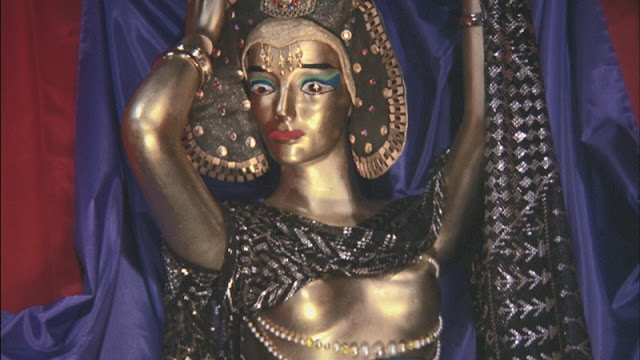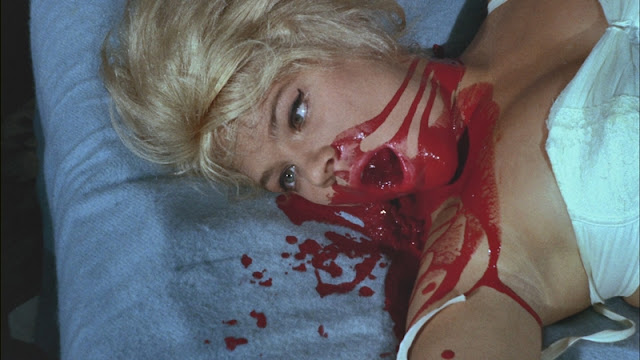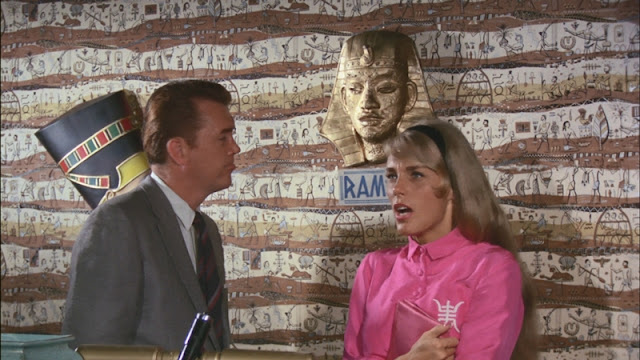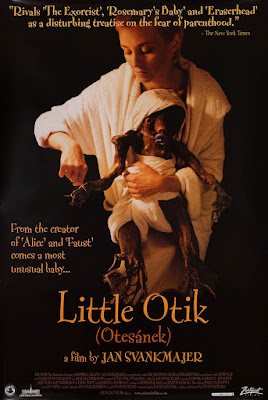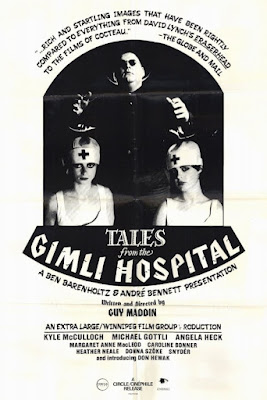(1963) Directed by Herschell Gordon Lewis; Written by Louise Downe; Story by David F. Friedman and Herschell Gordon Lewis; Starring: William Kerwin, Mal Arnold, Connie Mason, Lyn Bolton and Scott H. Hall; Available on Blu-ray and DVD
Rating: ***
“When I shot Blood Feast and we started making money
with it, I said, ‘Wow! Look how rotten this picture is. What if we made a good
one?’” – Herschell Gordon Lewis (excerpted from
interview with Boyd Rice, Incredibly Strange Films)
First and foremost, thanks to Rebecca from Taking Up Room for hosting the So Bad It’s Good Blogathon, celebrating the best of the worst. Today, I have a doozy for your consideration, the notorious Blood Feast directed by the so-called “Godfather of Gore,” Herschell Gordon Lewis.
Blood Feast has been touted in some circles as the “first” gore movie (or alternately, the “first” slasher film). I don’t really buy it, although I’ll concede that perhaps no one prior to H.G. Lewis and producer David F. Friedman exploited blood and guts onscreen the way they did. As anyone who’s seen Eyes Without a Face (1960) can attest, Blood Feast* was far from the first movie to delve into stomach-turning imagery. Arguably, Eyes Without a Face had loftier ambitions, whereas Blood Feast simply aimed to gross people out. Nevertheless, Blood Feast does enjoy the distinction of being the first in Lewis and Friedman’s so-called “Blood” trilogy, which also includes Two Thousand Maniacs (1964) and Color Me Blood Red (1965).
* Fun Fact #1: The film was edited by Bob Sinise, father of actor Gary Sinise.
According to producer Friedman, his production philosophy
was, “We don’t want it good; we want it Thursday.” This slap-dash approach,
mostly born out of necessity, considering the paltry budget, likely spawned
from Lewis and Friedman’s days as carnival showmen. Besides their official
roles, the director and producer wore a number of other hats. Lewis shot the
film, composed the score, and tweaked the script, while Friedman handled the
sound, and appeared in the movie as a Cadillac convertible-driving sugar daddy
to one of the movie’s victims. While some actors and actresses were recruited
from local theater, the filmmakers employed many non-actors* to fill in the
roles (and likely justify lower wages).
* Fun Fact #2: What was Lewis’ direction to Scott H. Hall, who played a police captain, and never acted before? “Just shout your lines.”
Dorothy Fremont (Lyn Bolton) is planning a birthday party for her daughter Suzette (Connie Mason), but wants “something unusual.” She finds the solution with Fuad Ramses (Mal Arnold),* who runs a catering business. Ramses offers (with a maniacal stare), “Have you ever had an Egyptian feast?” At this point, you’d almost expect some diabolical laughter to punctuate the scene, but alas, there’s only some exaggerated hand-wringing. As we soon discover, Ramses’ business is merely a front for his scheme to revive the ancient Egyptian goddess Ishtar, which involves finding fresh body parts for a ceremonial banquet. Ramses embarks on a killing spree to collect said parts from several unfortunate young women, with Suzette’s party the culmination of his bloody endeavors.
Fun Fact #3: The gray in Arnold’s hair varied from day to
day, depending on how much hair color the filmmakers had to work with.
"Don’t ask me, I just work here."
Blood Feast is chock-full of unintentional comic moments. In the back room of Ramses’ store sits a shrine/sacrificial altar, with a department store mannequin spray-painted gold, standing in for the goddess Ishtar. Her puzzled expression seems to mirror our collective befuddlement. Unfortunately, the living actors don’t fare much better than the inanimate object. Playboy Playmate Connie Mason speaks each line with the conviction of someone reciting their shopping list. The bumbling police work by two clueless detectives Pete Thornton (William Kerwin) and Frank (Scott Hall), will likely leave you shouting at your TV screen. The answer is smacking them in the face, yet somehow eludes them. Despite attending a lecture about ancient Egyptian sacrificial rituals, Thornton fails to find a link between a book found at the scene of the crime (titled “Ancient Weird Religious Rites”) (including disconcerting close-ups of Arnold’s face) and Ramses. Speaking of Ramses, we’re expected to believe that a 30-something actor is an old man, sporting fake gray hair and an exaggerated limp. The limp appears in some scenes, disappearing in other parts of the movie. Despite being elderly and disabled, he’s surprisingly spry, managing to carry one of his victims over his shoulder, and keeping several paces ahead of the cops chasing him in the final scene.
Blood Feast subscribes to Stephen King’s maxim (from Danse Macabre): “…if I find I cannot horrify, go for the gross-out.” Lewis described his approach to gore */**/*** as “intensive” rather than “extensive.” Lacking the budget for elaborate makeup effects, he decided to linger on shots of blood and viscera. Although many of these scenes seem fairly tame or even quaint by today’s standards, it’s easy to imagine how this made an impact on audiences accustomed to off-screen or implied gore.
* Fun Fact #4: As another money-saving measure, the filmmakers made their own stage blood. Lewis revealed that the key ingredient was diarrhea medicine, Kaopectate (presumably for the viscosity of the final product).
** Fun Fact #5: Depending on where patrons viewed Blood Feast, they had wildly different experiences. The flick’s gory scenes were cut from the prints that played at indoor theaters, while the numerous depictions of blood and guts were retained for drive-ins.
*** Fun Fact #6: The filmmakers used a sheep’s tongue from a
Tampa butcher shop for the infamous scene where Ramses pulls out a woman’s
tongue. Unfortunately for everyone involved, the refrigeration failed while the
tongue was in storage, creating a terrible stench during the shoot.
Unlike many of the films featured on this blog, Blood Feast was a runaway success, bringing in an estimated $4 million (not too shabby for an investment of $24,500). Lewis’ recipe for success: Simmer a large pot of stage blood, add a heaping portion of gore, stir in a generous splash of good old-fashioned xenophobia, let it simmer for 67 minutes, and there you have it – horror movie history. I’m not inclined to believe that a movie should be considered “critic proof,” but examining Blood Feast by the same criteria that you might evaluate something from Cocteau or Kurosawa seems irrelevant. Chances are, you’ll know in the first five minutes whether or not this is the right movie for you. It manages to underwhelm on nearly every level, but if you’re in the mood for atrocious acting, unintentional comedy, and Grand Guignol-style effects, you’ve come to the right place. On a different note, it’s hard not to admire such a calculated business move. Lewis and Friedman had their fingers on the pulse of what the American public wanted, before the public consciously knew what they wanted. Blood Feast was designed to fill the drive-ins and splash the screen with blood, and by those standards, it succeeds admirably.
Sources for this article: Herschell Gordon Lewis interview with Boyd Rice, Incredibly Strange Films; Something Weird DVD commentary by Herschell Gordon Lewis, David F. Friedman, and Mike Vraney





